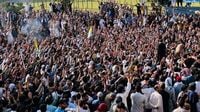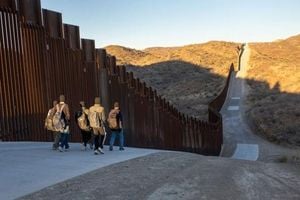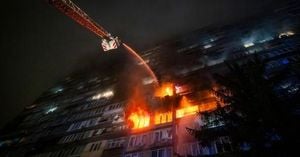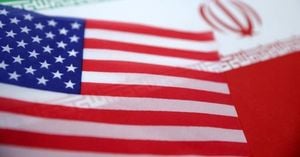What began as a protest over soaring utility bills and basic living costs in Pakistan-occupied Jammu and Kashmir (PoJK) has, in a matter of days, erupted into one of the most significant challenges to Islamabad’s authority over the region in recent memory. Since September 29, 2025, the streets of Muzaffarabad, Mirpur, Kotli, Neelum, and other districts have been gripped by mass demonstrations, strikes, and—tragically—violent clashes that have left at least 12 civilians and three police personnel dead, with more than 200 others injured.
The unrest, spearheaded by the Jammu Kashmir Joint Awami Action Committee (JKJAAC), is rooted in a sweeping 38-point charter of demands. While the movement’s initial spark was economic—calls for slashing electricity tariffs, subsidized wheat flour, and relief from rising living costs—it has rapidly become much more than that. Protesters are now demanding deep structural reforms: free healthcare and education, an end to elite privileges, and, crucially, the abolition of 12 legislative seats reserved for Kashmiri refugees settled in Pakistan, which many in PoJK view as a colonial-era relic that undermines their political autonomy.
As the protests have grown, so too has the government’s response. According to News Arena Network, the Pakistani authorities imposed a phone and internet blackout across PoJK, deployed large numbers of police and Rangers, and enacted road closures to stifle the movement’s momentum. Shops, hotels, and commercial centers in Muzaffarabad have remained shuttered, public transport has vanished from the roads, and most classrooms have been left empty despite schools officially staying open. The blackout, which has reportedly left over three million Kashmiris in PoJK under siege and two million abroad unable to contact their families, is widely seen by activists as a deliberate attempt to silence dissent and isolate the region during a critical phase of resistance.
At the heart of the movement’s political awakening is a growing sense among many Kashmiris that the status quo is no longer tenable. As reported by Hindustan Times, JKJAAC leader Shaukat Nawaz Mir did not mince words, declaring, “Azad Kashmir is not free, but shackled by decades of exploitation and repression.” This rhetoric—once rare in public discourse—has become increasingly common among protest leaders and participants, who now openly accuse the Pakistan government and military of oppressing PoJK’s residents.
On September 29, the JKJAAC called for a shutdown and wheel-jam strike that quickly escalated into widespread unrest. Rival groups held parallel protests, each blaming the other for triggering violence during what began as a peaceful agitation. The body of a protester in Mirpur district was reportedly not buried until demands were met, a powerful act of symbolic resistance that underscored the movement’s determination.
By October 2, the scale of the crackdown and the mounting casualties had drawn the world’s attention. The issue was raised at the 60th session of the UN Human Rights Council (UNHRC) in Geneva, where Nasir Aziz Khan, spokesperson for the United Kashmir People’s National Party (UKPNP), urged the international community to intervene. He warned of a looming humanitarian crisis and reminded UN member states of their obligations under the Vienna Declaration, Universal Declaration of Human Rights (UDHR), and International Covenant on Civil and Political Rights (ICCPR) to safeguard fundamental freedoms. “Over three million Kashmiris in PoJK remain under siege, while two million abroad have lost contact with their families,” Khan said, calling the blackout a deliberate strategy to suppress dissent.
The Pakistani government, for its part, insists it is taking the protesters’ concerns seriously. On October 1, Federal Minister Tariq Fazal Chaudhry told reporters that the government had accepted “90 per cent of the committee’s demands” and that federal ministers would serve as guarantors for their implementation. Yet, despite this assurance, JKJAAC leaders have vowed to continue their protests until every demand is met, warning of further escalation if the government fails to deliver.
The violence has taken a heavy toll not only on civilians but also on security forces. At least three police personnel have been killed and more than 100 injured in clashes with demonstrators, though it remains unclear how many of the injured are civilians versus police. According to Dawn, at least one person was killed and over a dozen others injured—including a policeman—during the September 29 strike, which coincided with the communications blackout.
Allegations that security forces, including Pakistani Rangers, opened fire on peaceful demonstrators have only fueled public anger and deepened mistrust. Protesters have defied blockades, organizing large march caravans to reach Muzaffarabad and other administrative centers. The movement’s reach—from Muzaffarabad to Mirpur, Neelum, and beyond—demonstrates that the discontent is not confined to isolated pockets but is regionwide.
International human rights groups and media organizations have been called upon by demonstrators to spotlight the ongoing violations in PoJK, including restrictions on civil liberties and the deaths of at least 12 civilians during clashes with security forces. Protesters have also announced plans for a ‘Long March’ to Muzaffarabad, signaling their intent to sustain pressure on the authorities and keep their demands in the global spotlight.
For many in PoJK, the current crisis represents a turning point. For decades, the notion of “Azad Kashmir” has functioned as a political fiction—a nominally autonomous region under the oversight of Islamabad, with limited real self-governance. The scale and tone of the current protests suggest that a growing number of Kashmiris are no longer willing to accept this arrangement without meaningful change. The breadth of the movement, the clarity of its demands, and the willingness of protesters to risk their lives for basic rights and self-governance have all combined to challenge the narrative of local autonomy and expose the deep fissures in the region’s relationship with Pakistan.
As the protests continue and the world watches, the situation in PoJK remains volatile. Whether the government’s promises of reform will be enough to quell the unrest, or whether the movement will force a more profound reckoning with the region’s political future, remains to be seen. What is clear, however, is that the people of Pakistan-occupied Jammu and Kashmir have made their voices heard—loudly, and at great cost.




